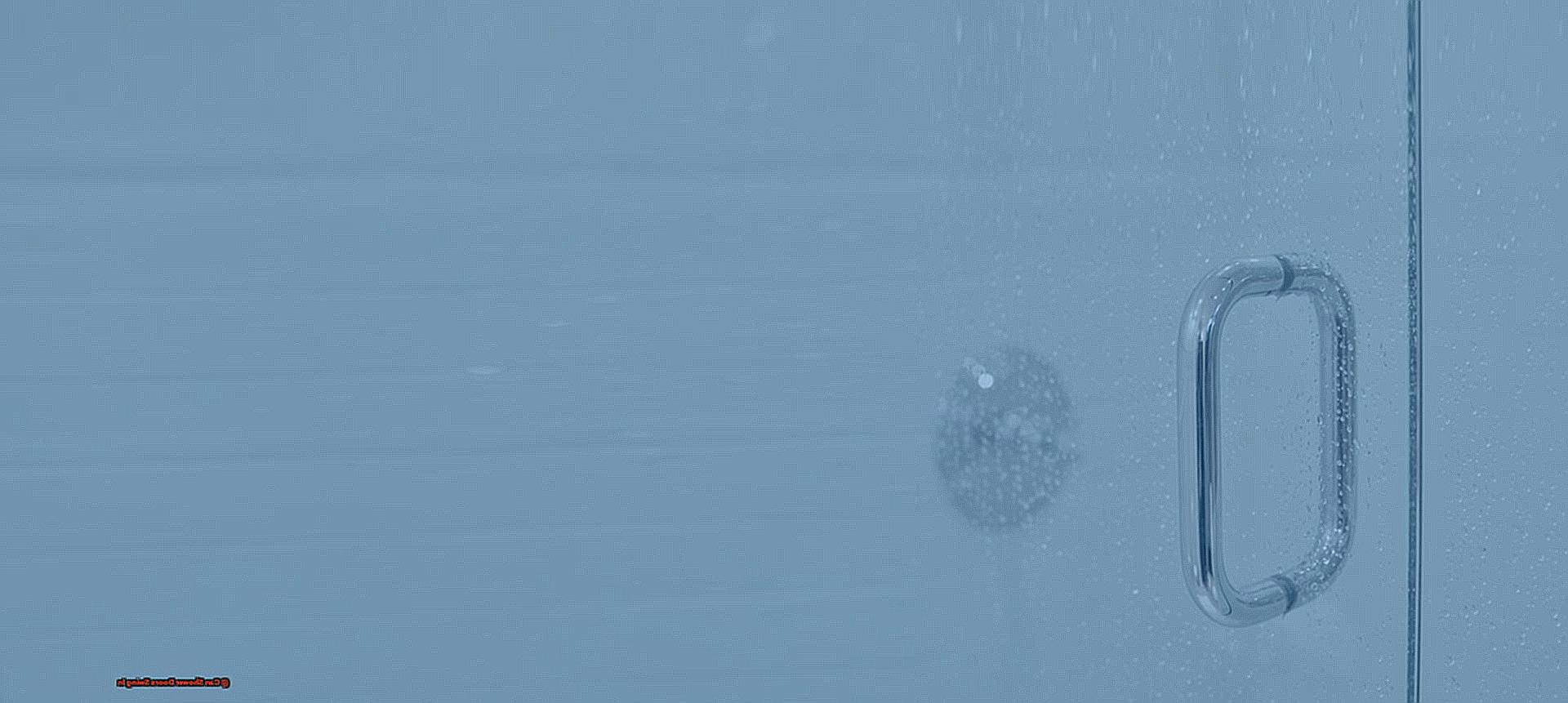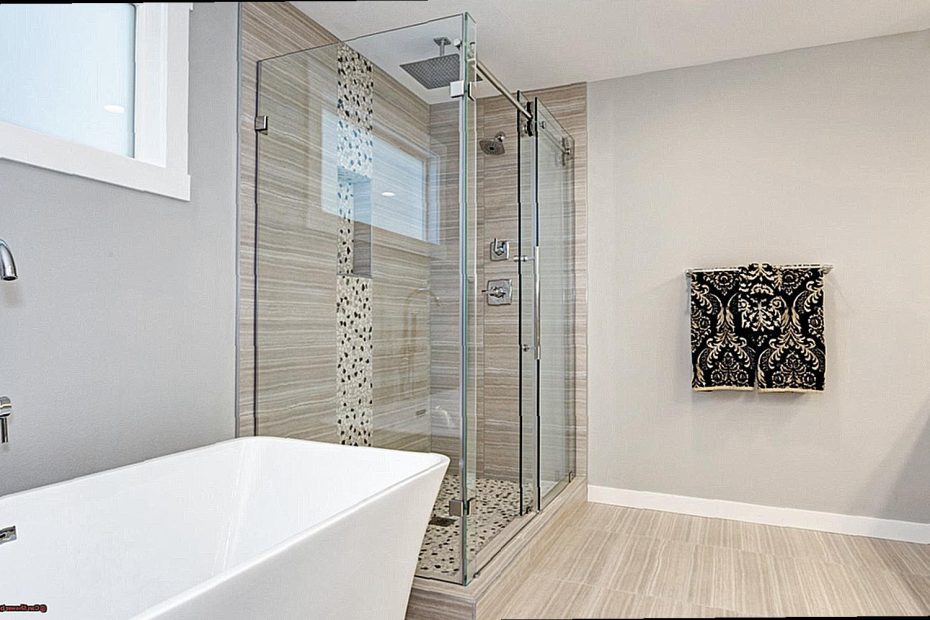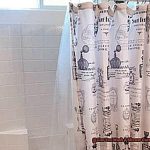Imagine this: you’re stepping into your shower, ready to wash away the stresses of the day.
But instead of reaching for the handle to close the door and create a barrier between you and the outside world, you find yourself pulling it towards you. That’s right, your shower door swings inward.
It may seem like a small detail, but could this design change make all the difference in your daily routine? In recent years, there has been a growing trend towards inward swinging shower doors, and it’s causing quite a stir in the world of bathroom design.
Are they just a passing fad or a game-changing innovation? Let’s take a deep dive into the debate and explore the pros and cons of this unconventional shower door style.
Get ready to have your mind (and possibly your shower) blown.
Contents
Can Shower Doors Swing Both Ways?
While traditional sliding doors may be the go-to option for most, swinging shower doors, also known as hinged shower doors, are gaining popularity for their functionality and aesthetic appeal.
But what makes a shower door able to swing both ways according to International Residential Code Section P708? The key is in the pivot hinge. This unique type of hinge allows the door to open up to 80 degrees in either direction: inward or outward. This means that swinging shower doors can operate just like regular doors, providing users with the flexibility to choose their preferred direction.
So why opt for swinging shower doors instead of traditional sliding doors? For one, they offer increased accessibility and ease of use. Sliding doors can be challenging for those with limited mobility or disabilities, while swinging doors provide a wider opening without the need to slide them open. This makes them a more practical choice for individuals of all ages and abilities.
Apart from accessibility, swinging shower doors also offer better ventilation. When opened, they allow fresh air to circulate inside the shower, preventing any buildup of humidity or moisture. This not only maintains a clean and dry bathroom but also prevents the growth of mold and mildew: a common issue in poorly ventilated bathrooms.
Aside from practical benefits, swinging shower doors come in various designs and materials. They can be customized to fit any bathroom size or shape, making them an ideal option for smaller bathrooms with limited space. Additionally, they are available in different materials such as glass, metal, or plastic, providing homeowners with a range of options to suit their personal style and budget.
However, there are a few considerations to keep in mind when opting for swinging shower doors. They require more space for operation and may not be suitable for all bathroom layouts. It is essential to consult with a professional to ensure proper installation and functionality.
While traditional sliding doors may be the norm, swinging shower doors offer a unique and practical alternative.
Which Direction Should a Shower Door Open?
In the intricate world of bathroom design, every detail holds significance. From the hue of the tiles to the placement of the washbasin, homeowners strive for both functionality and aesthetic appeal in their bathrooms. One pivotal aspect of bathroom design is the direction in which a shower door should open. While it may appear to be a minor detail, the direction of a shower door can greatly impact the overall usability and flow of a bathroom. So, what factors should be taken into consideration when making this decision?
The Layout and Size of the Bathroom
The layout and size of your bathroom hold utmost importance when it comes to determining which direction a shower door should open. In compact bathrooms, an inward-swinging door can save space and prevent collisions with other fixtures. Conversely, an outward-swinging door provides easier access in larger bathrooms.
The Position of Other Fixtures
Apart from the dimensions and layout of the bathroom, the placement of other fixtures such as toilets and sinks must also be considered when selecting which way a shower door should open. It is crucial to ensure that the opening direction of the shower door does not interfere with these fixtures as it could lead to accidents or inconvenience.
Accessibility Needs
It is imperative to think about accessibility needs when deciding the optimal direction for a shower door to swing. If someone in your household has mobility issues, an outward-swinging door may be more convenient for them. However, if you have young children or elderly family members, an inward-swinging door may provide more safety and ease of use.
Expert Consultation and Research
Choosing the right direction for a shower door can be daunting, especially with so many factors at play. Seeking professional advice from a contractor or interior designer can provide valuable insights and help you make an informed decision. Additionally, researching building codes and regulations in your area is crucial to ensure that your chosen direction meets safety standards.
How to Reverse a Shower Door
Are you tired of the perpetual inconvenience of bumping into your shower door every time you enter or exit? Or maybe you’re looking to revamp your bathroom’s layout by reversing the direction of your shower door? Whatever your motivation may be, reversing a swinging shower door is a simple yet impactful DIY project that can elevate the look and functionality of your bathroom.
In this comprehensive guide, we will take you through a detailed step-by-step process of reversing a swinging shower door.
Preparing the Shower Door
Before commencing the reversal process, the first step is to remove the shower door from its hinges. To ensure no scratches or damages, place the door on a soft surface like a towel or blanket.
Detaching the Hinges
Using a screwdriver, carefully detach the hinges from the side of the shower doorway where they are currently attached. Remember to keep all screws and small parts in a secure place for reassembly later on.
Installing Hinges on the Opposite Side
Now comes the crucial step of installing hinges on the opposite side of the doorway. Before proceeding, it is advisable to confirm with the manufacturer if this alteration is compatible with your specific shower door model. If it is, securely attach the hinges using screws.
Flipping and Connecting the Door
Next, flip the shower door upside down and connect it to the newly installed hinges. Ensure proper alignment before screwing them in place.
Testing and Adjusting
Once the door is attached, carefully test its movement by opening and closing it multiple times. If it operates smoothly, congratulations. You have successfully reversed your swinging shower door. However, if there are any issues with its movement or alignment, make necessary adjustments until you achieve satisfactory results.
Alternative Method:
Alternatively, during installation, you can simply turn the shower door upside down and place the hinges on the opposite side.
Which Side of the Shower Door Faces Out?
When it comes to designing a bathroom, one must take into account both functionality and placement. One aspect that often gets overlooked is the orientation of the shower door. The question arises: should it open inwards or outwards? Which direction is most recommended for ease of use and safety? As someone well-versed in home improvement, I am here to provide you with a clear and concise answer to this age-old inquiry: Which side of the shower door faces out?
Building Codes and Safety Regulations
The foremost consideration when it comes to shower doors is safety, as dictated by building codes. These codes require all shower doors to open outwards, ensuring easy exit from the tub in case of an emergency. This not only fulfills a requirement but also makes practical sense. Imagine trying to squeeze past a swinging door in a confined space – not exactly the most ideal situation.
Reversible Hinges for Versatility
Fortunately, most modern shower doors come equipped with reversible hinges, providing flexibility in installation. This means that you have the choice to decide which direction your door opens, depending on your bathroom layout and personal preference. Keep in mind that the orientation of your door should not interfere with any surrounding fixtures, such as sinks or toilets.
Usability and Accessibility Considerations
When making the decision on which side your shower door should face, it’s important to consider usability and accessibility. Can you easily reach the shower valve from outside the tub? Is there enough room for you to comfortably maneuver? These are crucial factors to take into account for a seamless shower experience.
Personal Preference Matters
In the end, the right orientation for your shower door ultimately boils down to personal preference. Some may prefer an outward opening door for ease of exit, while others may opt for an inward opening door for privacy reasons. It’s essential to consider all factors before settling on a decision.
How to Reverse a Shower Door
Showering is an essential part of our daily routine, and having a functional shower door is crucial for a smooth experience. However, sometimes you may find yourself wanting to switch things up or realizing that your new shower door swings in the wrong direction. In such cases, reversing a shower door becomes necessary. While it may seem like a daunting task, fear not, as any DIY enthusiast can tackle it with ease. In this comprehensive guide, we will take you through the process of reversing a shower door in simple steps, giving your bathroom a fresh new look.
To begin, gather all the necessary tools before starting the process. You will need a screwdriver, drill, and possibly a leveler. It’s also advisable to have a soft cloth or towel on hand to protect the shower door during the installation process.
The first step is to remove the hinges from the current side of the shower doorway where they are installed. To avoid any damage, lay down the shower door on a soft surface. Use a screwdriver to remove any screws or bolts holding the hinges in place.

Next, reinstall the hinges on the opposite side of the shower doorway. This step may require drilling new holes if they don’t align with existing ones. To ensure proper installation, use a leveler to make sure the hinges are straight and aligned.
Now comes the tricky part – flipping and connecting the shower door to the newly installed hinges. Don’t hesitate to ask for assistance if needed. Ensure that the door is securely attached before moving on to the next step.
If flipping and attaching the door seems too complicated, an alternative method is turning the swinging shower door upside down during installation. This option may be easier for some individuals.
In conclusion, reversing a shower door may seem like a daunting task at first glance. However, with the right tools and following these simple steps, anyone can successfully complete this DIY project and give their bathroom a fresh new look. So, what are you waiting for?
Which Side of the Shower Door Faces Out?
One simple yet highly effective method is to install a new shower door. But before you embark on this DIY project, there is an essential question that demands an answer: which side of the shower door should face out? As a connoisseur of home decoration and DIY undertakings, I have compiled a list of key factors to consider when tackling this crucial decision.
The Layout and Size of Your Bathroom
The layout and size of your bathroom hold significant sway over which side of the shower door should face outward. For those with smaller bathrooms, sliding doors are a prudent choice as they save space and provide effortless access. Conversely, if you have a more expansive bathroom, outward-swinging doors may prove more fitting.
Positioning of Fixtures
Another pivotal aspect to bear in mind is the positioning of other fixtures in your bathroom, such as toilets and sinks. You must ensure that the shower door’s direction of opening does not impede these fixtures. Having a shower door that collides with the toilet or sink every time you open it can be exceedingly vexing.
Accessibility Requirements
If you or anyone in your household has mobility constraints, it’s crucial to factor in their accessibility needs when selecting a shower door. In such scenarios, sliding doors or doors that open inward may prove to be a more convenient option for ease of access.
Professional Counsel and Building Codes
It’s always wise to seek professional counsel when undertaking home improvement projects. This holds especially true for shower door installations, as certain building codes and regulations must be adhered to. Seeking guidance from an expert can aid you in making an informed decision and preclude any potential issues down the line.
Personal Preferences
Last but not least, don’t forget about your personal preferences. After taking into account all the practical considerations, it ultimately boils down to what style and design resonates with you and complements your bathroom’s overall aesthetic.
Conclusion
In conclusion, the ongoing debate surrounding shower door direction has sparked a new trend in bathroom design.
While the traditional sliding doors may have been the standard for years, homeowners are now gravitating towards hinged shower doors for their practicality and visual appeal. With pivot hinges allowing for inward or outward swinging, users have the freedom to choose their preferred direction.
This not only provides convenience and ease of use but also promotes better air circulation in the shower. However, it’s crucial to take into account factors such as bathroom layout, fixture placement, and accessibility requirements before deciding on which way your shower door should open.
And although building codes may dictate outward-swinging doors for safety reasons, reversible hinges offer flexibility in installation. Ultimately, the decision boils down to personal preference and finding a shower door that aligns with your style and budget.





